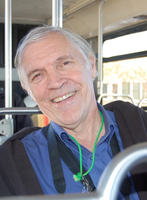
Robert Knapp Jr.
Abe Fellowship 2008
Project Title
Comparative Case Studies of Sustainable Commercial/Institutional Buildings Institutional Affiliation (at time of award)
Member of the Faculty, Physics and Sustainable Design, Evergreen State College 